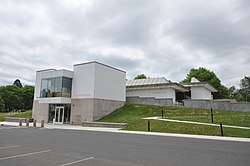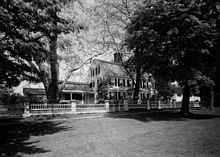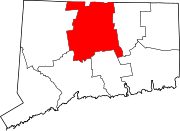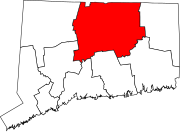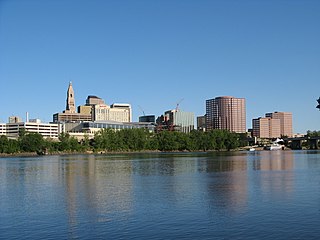
Hartford County is a county located in the north central part of the U.S. state of Connecticut. According to the 2020 census, the population was 899,498, making it the second-most populous county in Connecticut. Hartford County contains the city of Hartford, the state capital of Connecticut and the county's most populous city, with 121,054 residents at the 2020 census. Hartford County is included in the Hartford-East Hartford-Middletown metropolitan statistical area.

Canton is a town, incorporated in 1806, located in the Farmington Valley section of the Capitol Planning Region, Connecticut, United States. The population was 10,124 as of the 2020 census. It is bordered by Granby on the north, Simsbury on the east, Avon and Burlington on the south, New Hartford on the west, and Barkhamsted on the northwest. Running through it is the Farmington River. The town includes the villages of North Canton, Canton Center, Canton, and Collinsville. In September 2007, Collinsville was ranked in Budget Travel magazine as one of the "Ten Coolest Small Towns In America".

Enfield is a town in Hartford County, Connecticut, United States, first settled by John and Robert Pease of Salem, Massachusetts Bay Colony. The town is part of the Capitol Planning Region. The population was 42,141 at the 2020 census. It is bordered by Longmeadow, Massachusetts, and East Longmeadow, Massachusetts, to the north, Somers to the east, East Windsor and Ellington to the south, and the Connecticut River to the west.

Farmington is a town in Hartford County in the Farmington Valley area of central Connecticut in the United States. The town is part of the Capitol Planning Region. The population was 26,712 at the 2020 census. It sits 10 miles west of Hartford at the hub of major I-84 interchanges, 20 miles south of Bradley International Airport and two hours by car from New York City and Boston. It has been home to the world headquarters of several large corporations including Otis Elevator Company, United Technologies, and Carvel. The northwestern section of Farmington is a suburban neighborhood called Unionville.

Salisbury is a town situated in Litchfield County, Connecticut, United States. The town is the northwesternmost in the state of Connecticut; the Massachusetts-New York-Connecticut tri-state marker is located at the northwestern corner of the town. The population was 4,194 at the 2020 census. The town is part of the Northwest Hills Planning Region.

Sharon is a town in Litchfield County, Connecticut, United States, in the northwest corner of the state. At the time of the 2020 census, the town had a total population of 2,680. The town is part of the Northwest Hills Planning Region. The ZIP code for Sharon is 06069. The urban center of the town is the Sharon census-designated place, with a population of 729 at the 2010 census.

Salem is a town in New London County, Connecticut, United States. The town is part of the Southeastern Connecticut Planning Region. The population was 4,213 at the 2020 census.

Bernardston is a town in Franklin County, Massachusetts, United States. The population was 2,102 at the 2020 census. It is part of the Springfield, Massachusetts Metropolitan Statistical Area.

Heath is a town in Franklin County, Massachusetts, United States. The population was 723 at the 2020 census. It is part of the Springfield, Massachusetts Metropolitan Statistical Area.

Agawam is a city in Hampden County, Massachusetts, United States. The population was 28,692 at the 2020 census. Agawam sits on the western side of the Connecticut River, directly across from Springfield. It is considered part of the Springfield Metropolitan Statistical Area, which is contiguous with the Knowledge Corridor area, the second-largest metropolitan area in New England. Agawam contains a subsection, Feeding Hills. The Six Flags New England amusement park is located in Agawam, on the banks of the Connecticut River.
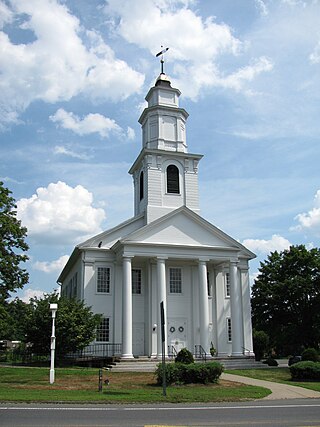
Southwick is a town in Hampden County, Massachusetts, United States. The population was 9,232 at the 2020 census, down from 9,502 at the 2010 census. It is part of the Springfield, Massachusetts Metropolitan Statistical Area.

Leavittsburg is a census-designated place in Trumbull County, Ohio, United States. The population was 1,571 at the 2020 census. Located directly west of Warren, Ohio, it is part of the Youngstown–Warren metropolitan area.

Weathersfield is a town in Windsor County, Vermont, United States. The population was 2,842 at the 2020 census.

Greenfield is the only city in, and the seat of, Franklin County, Massachusetts, United States. Greenfield was first settled in 1686. The population was 17,768 at the 2020 census. Greenfield is home to Greenfield Community College, the Pioneer Valley Symphony Orchestra, and the Franklin County Fair. The city has a Main Street Historic District containing fine examples of Federal, Greek Revival, and Victorian architecture.

Poultney is a town in Rutland County in the southwestern part of the U.S. state of Vermont. New York state is on its western border. Castleton, Vermont, is on its northern border. Poultney was home to Green Mountain College, a private liberal arts college that closed in 2019. The Village of Poultney is entirely within the town. The town population was 3,020 at the 2020 census.

Oliver Phelps was an American politician. He was early in life a tavern keeper in Granville, Massachusetts. During the Revolution he was Deputy Commissary of the Continental Army and served until the end of the war. After the war ended, he was appointed a judge, was elected to the U.S. House of Representatives, and became a land speculator in western New York state. A depressed real estate market forced him to sell most of his holdings.
Isaac Bissell was a patriot post rider who delivered mail between Boston and Hartford, Connecticut. On April 19, 1775, the British made an attack on Lexington and Concord, igniting the American Revolutionary War. He was assigned to alert American colonists of the news and rally them to assist the Massachusetts minutemen. Traveling from Watertown, Massachusetts, on the Upper Post Road to Hartford, Connecticut, and through Connecticut Colony, he carried the Lexington Alarm message from Joseph Palmer. He rode again in July 1779 to deliver the New Haven Alarm. Bissell served the Connecticut Militia throughout the Revolutionary War.
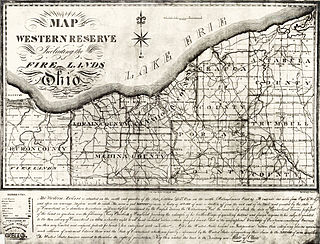
Capt. John Wheeler Leavitt (1755–1815), born in Suffield, Connecticut, was an early settler of Ohio's Western Reserve lands, where members of his family had bought large tracts from the state of Connecticut, and where Capt. Leavitt became an early innkeeper, politician and landowner in Warren, Trumbull County, Ohio. Capt. Leavitt was a member of the Connecticut Land Company and along with his cousin Ebenezer King from Suffield, paid over $51,000 for approximately 78,500 acres (318 km2) of Ohio land, which included the township of Warren. The Leavitt family of Warren would go on to play a substantial role in the history of their adopted town and in Ohio.

Thaddeus Leavitt was an American merchant who invented an improved upon version of the cotton gin, as well as joining with seven other Connecticut men to purchase most of the three-million-plus acres of the Western Reserve lands in Ohio from the government of Connecticut, land on which some of his family eventually settled, founding Leavittsburg, Ohio, and settling in Trumbull County, Ohio. Leavitt served on a commission in the early nineteenth century to settle boundary disputes between Massachusetts and Connecticut, was a director of one of Connecticut's first banks, and was a shipowner whose vessels traded throughout the Atlantic. Leavitt also kept a journal in which he noted everything from the weather to 'cures' for various ailments to the adoption of the United States Constitution.
Titus Gay, who called himself Titus Kent, also known as "Old Ti", was born into slavery in the town of Suffield, Connecticut, United States. Titus's father had the Kent surname. Because of the Gradual Emancipation Act passed in 1784, Titus was freed in 1812. Once freed, he continued to work for Rev. Ebenezar Gay, Jr. performing a number of duties. His presence in the lives of the townspeople made him an important member of the community. He is also remembered for his efforts to prevent local enslaved people from being sent into slavery in the South. He was buried in the Congregational church cemetery in Suffield, Connecticut.
